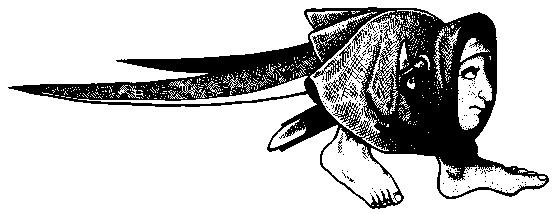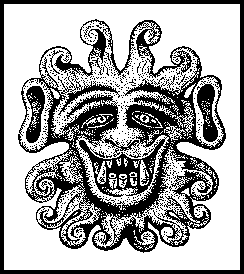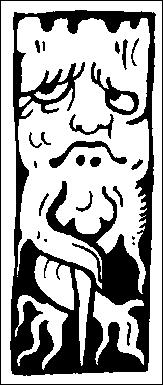

It goes without saying that this academic is enamored of monsters, and devotes much of this work to analyzing such medieval texts as Beowulf, Sir Gawain and the Green Knight, Le Chevalier au lion, and The Tale of Thopas. In the process, he comes up with a theory as to why we are fascinated by big folk (and Bigfoot).
Cohen is a fan of Jacques Lancan, and so sees in the medieval monster romances a reflection of historical, not to say hysterical, events in the Middle Ages. For instance, there is usually, in these giant stories, the ritual decapitation . Gilgamesh "decapitates the monster's corpse, displays the head to the gathered gods, and is divinely transfigured." The same happens with Perseus, Arthur, and Beowulf.
Cohen sees in this cultural fascination with the body in pieces coinciding with other developments in the 1300s:
First in Italy and then elsewhere in Europe, autopsies were performed to determine legal cause of demise, transforming dead flesh into living narratives...Sacred hands, fingers, hearts, and hair were enclosed in reliquaries shaped like the bodily fragments that they displayed. Royal corpses were routinely eviscerated, boiled, and divided in Germany. Lepers were increasingly looked upon as morally reprehensible, mainly because their bodies were caught in the process of disaggregation. Juridical torture was revived in England around 1300, and bodily mutilation was being practiced more frequently as punishment for serious crimes. At about the same time, romance was gaining a particular ascendancy in Middle English.

The Bible could be described as the collective discursive unconscious of the West, its stories providing the palimpsests that medievals used in making real their own experience of history.
But he does not limit himself to Bibles and medieval Grendels. The good professor points that acculturating a modern child is similar to creating a monster. He quotes from Lacan: "The child, itself so recently born, gives birth to...a statue, and automaton, a fabricated thing." (He seems to miss the chance to point out, however, that all of us experience, during puberty, a similar process of monsterization and fabrication. Between twelve and fifteen, the body grows upwards and outwards, and we come to tower over adults --- sometimes even our parents. The giantization process may include shame --- shame at what we have become, shame that we appear in the mirror as a stranger, a monstrous one.)
For the medievals, giants came from the cold world outside --- a world of stone, of ruins, the chaos of the fens and bogs and wind-swept hills. Civilization existed in the warm hall --- in the case of medieval England, a "mead" hall --- which was set apart purposefully from the world out there created by distant and vague giants. One might compare this inner world of civilized, albeit boozy and smoky warmth with the primitive, chilly, monster-run world outside the artificial buildings.
Giants, said Edmund Burke, represent "tyranny, cruelty, injustice, and every thing horrid and abominable." How far we have travelled, says Cohen, when the present day monster is "a jolly green corporate emblem, assuring the consumers that a certain brand of frozen vegetables is fresh and enticing."
 He takes us through Gargantua, Orgoglio in the Faerie Queen, and Milton's Satan, to the Lincoln Memorial in Washington, D. C.,
He takes us through Gargantua, Orgoglio in the Faerie Queen, and Milton's Satan, to the Lincoln Memorial in Washington, D. C.,
where the centerpiece statue yokes giantism to a public spectacle of ideological authority; Paul Bunyan, the corporate mascot of a logging company who was manufactured as an "authentic" legend of the lumberjacks to increase paper sales, even that frustrated, hirsute Romeo of celluloid fame, King Kong...This duality of the giant, this sublime dread crossed with an enjoyment that plants itself deep in the body, is mainly a medieval inheritance.
Professor Cohen has constructed a fine world here, and --- as is true of the genuinely creative --- his by-ways are fun and often funny. His reading of Chaucer's "Tale of Sir Thopas" --- for those of us who struggled with it, uncomprehendingly, long ago --- is an eye opener, especially when the comic character Thopas is seen as a doppelgänger of Chaucer himself. And his precis of the 1957 film The Amazing Colossal Man --- with the "expandable loincloth" and the monster's head made bald by radiation "giving him that retro-futuristic look of which the fifties were so fond" --- is a true knee-slapper. It's enough to make some of us willing to journey to George Washington University where Cohen teaches, to listen in on one of his master classes in giantism.
We regret to point out that the University of Minnesota Press poop-sheet didn't deign to tell us how tall and monstrous the good professor is. We'd give him eight feet --- and five heads --- at the very least.